The overlap model: a model of letter position coding
- PMID: 18729592
- PMCID: PMC2597794
- DOI: 10.1037/a0012667
The overlap model: a model of letter position coding
Abstract
Recent research has shown that letter identity and letter position are not integral perceptual dimensions (e.g., jugde primes judge in word-recognition experiments). Most comprehensive computational models of visual word recognition (e.g., the interactive activation model, J. L. McClelland & D. E. Rumelhart, 1981, and its successors) assume that the position of each letter within a word is perfectly encoded. Thus, these models are unable to explain the presence of effects of letter transposition (trial-trail), letter migration (beard-bread), repeated letters (moose-mouse), or subset/superset effects (faulty-faculty). The authors extend R. Ratcliff's (1981) theory of order relations for encoding of letter positions and show that the model can successfully deal with these effects. The basic assumption is that letters in the visual stimulus have distributions over positions so that the representation of one letter will extend into adjacent letter positions. To test the model, the authors conducted a series of forced-choice perceptual identification experiments. The overlap model produced very good fits to the empirical data, and even a simplified 2-parameter model was capable of producing fits for 104 observed data points with a correlation coefficient of .91.
Copyright (c) 2008 APA, all rights reserved.
Figures
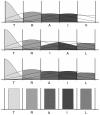

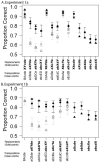
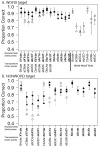


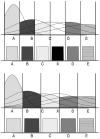






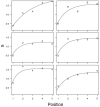

References
-
- Acha J, Perea M. The effect of neighborhood frequency in reading: Evidence with transposed-letter neighbors. Cognition. 2008a;108:290–300. - PubMed
-
- Acha J, Perea M. The effects of length and transposed-letter similarity in lexical decision: Evidence with beginning, intermediate, and adult readers. British Journal of Psychology. 2008b;99:245–264. - PubMed
-
- Allport DA. On knowing the meaning of words we are unable to report: The effect of visual masking. In: Dornic S, editor. Attention and performance VI. Erlbaum; Hillsdale, NJ: 1977. pp. 505–533.
-
- Andrews S. Lexical retrieval and selection processes: Effects of transposed-letter confusability. Journal of Memory and Language. 1996;35:775–800.
-
- Ashby FG, Prinzmetal W, Ivry R, Maddox WT. A formal theory of feature binding in object perception. Psychological Review. 1996;103:165–192. - PubMed
Publication types
MeSH terms
Grants and funding
LinkOut - more resources
Full Text Sources
Other Literature Sources

